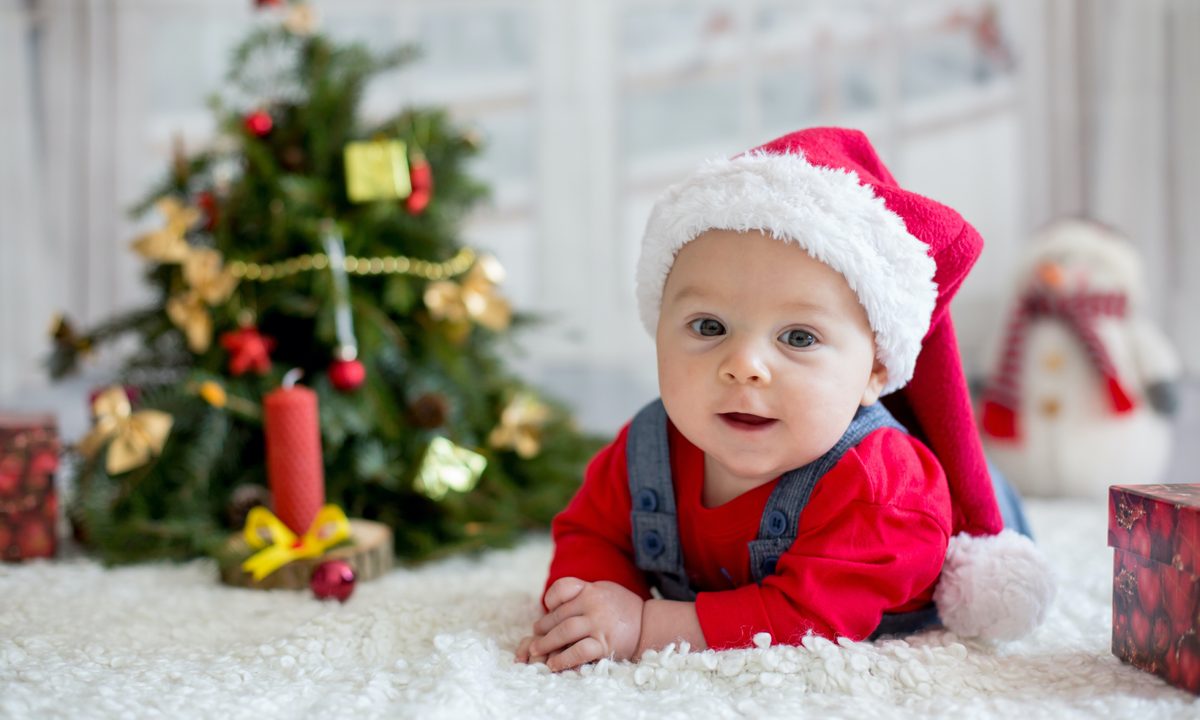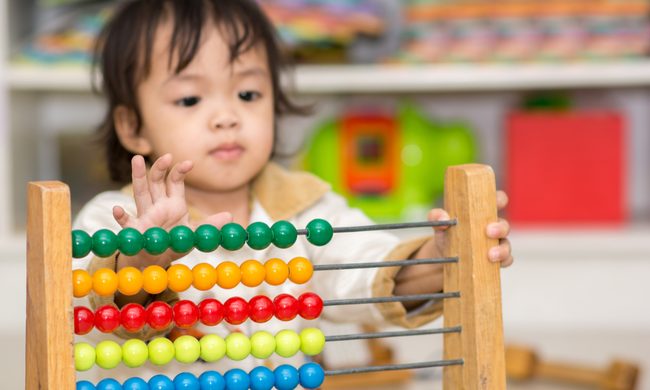Christmas is one of the most magical times of the year, but it can also be a bit stressful, especially when you have a curious baby or toddler in the house. Little ones tend to want to touch, pull, and grab at all the sparkly lights and pretty ornaments. Although Christmas decorations are beautiful, many of them can also pose a series of dangers to children.
One of the biggest dangers to your baby is your Christmas tree. Christmas trees are so pretty and such a symbol of the holiday season, but they do pose a real risk to your child. From trees tipping over to baubles being broken, it's important that you baby-proof your Christmas tree to prevent any accidents.

Secure your tree!
Whether you choose a real or artificial tree, we've got some tips for how to prevent Christmas tree disasters this season.
Step 1: Secure that Christmas tree the proper way.
Make sure your tree is firmly in place and absolutely stable. You don’t want a curious kid to crawl underneath and give it a tug that sends the entire thing toppling. You also don’t want a tree that’s so unsteady that just a passing pull can send it crashing.
Step 2: Put your baby-safe Christmas tree in an out-of-the-way corner of your home.
Choose a spot outside of where your baby normally plays — especially if they’re walking and crawling.

Keep ornaments away
Ornaments can pose a real danger to babies and toddlers, especially if they're breakable or small.
Step 1: Move the ornaments up.
While decorating your Christmas tree, consider your baby’s height and arm length. Then, put all your breakable ornaments far out of your child’s reach. You don’t want them to pull on a glass orb, just for it to shatter around their feet.
Step 2: Put them away (just for now!)
You may have to put away some of those precious ornaments for a few years. If you’re particularly worried about ornaments breaking, you may want to consider waiting to put those ones on your tree until your child is a bit older.
Step 3: Put temptation out of reach.
Ornaments, garlands, and strings of lights that hang down should also be placed out of reach on your tree, so as to keep those items away from curious hands (and possibly mouths).
Step 4: Skip the tinsel.
Tinsel is especially a choking hazard, so you may want to open for a less-shiny garland option.
Step 5: Ditch the metal hooks to hang your ornaments.
These often get lost while decorating or over the season, and they can prove to be a choking hazard to your child. Opt to use string or ribbons instead of hooks, at least while your baby is still young enough that they’re putting whatever they can find into their little mouths.

Be cautious with lights
One of the best parts of Christmas decorating is stringing lights everywhere, but these can also pose a safety hazard to young children.
Step 1: Check the socket.
Once your Christmas lights are far enough up your tree that they won’t pose a threat, look at where they’re plugged in. Make sure your child can’t get to that electrical socket.
Step 2: Secure the cords.
You may want to consider taping down the cords as well if they follow along a wall or the floor.
Step 3: Skip the extra lights.
While it might be tempting to line your furniture with Christmas lights or to sprinkle lights along your windowsills, again, keep in mind what your child could tug and pull on, and how you can best secure all decorations.
Step 4: Be cautious of candles.
Christmas is prime time for lighting some candles or a fire in the fireplace. You’ll want to put all candles out of reach of your child, and then install a fireplace guard to keep infants away from the flames, whether you have a wood-burning or gas fireplace.

Other things to consider
Here are a few other ways you can make your home safer for little ones.
Step 1: Check your flora.
Christmastime flowers and plants such as mistletoe, and poinsettias are beautiful additions to any tree, but, if you’re using real plants, just like with breakable baubles, you want to keep them out of reach of your child. Many of these plants are poisonous if ingested.
Step 2: Consider a fake tree.
Artificial trees offer a lot of benefits to families, compared to their real counterparts. There are fewer pine needles that can be accidentally eaten, and fake trees aren’t the same fire hazard that real trees pose.
Step 3: Break out the baby gate.
Of course, if you do all of the above and you’re still worried about the possible dangers your Christmas tree poses to your infant, you may want to simply put a baby gate around your Christmas tree or at the entrance of the room where it's located. This will ensure that, no matter what’s on your tree, your child won’t be able to access it.

Consider a kids' tree for your toddler
Kids love Christmas trees and it's only natural for your curious toddler to be fascinated by the bright ornaments and twinkling lights. This is a great time to get your kids their own mini-tree to decorate and adore, especially since this will possibly distract them from wanting to constantly redecorate your main Christmas tree.
You'll still want to baby-proof this Christmas tree by purchasing shatter-proof ornaments and ensuring the small tree is just their size, but giving them something that's their own to decorate with make them feel special during the holiday season.
Make sure that your next holiday season is magical — and accident-free. With a few simple precautions, your family can enjoy a seamless, no-worries holiday.



